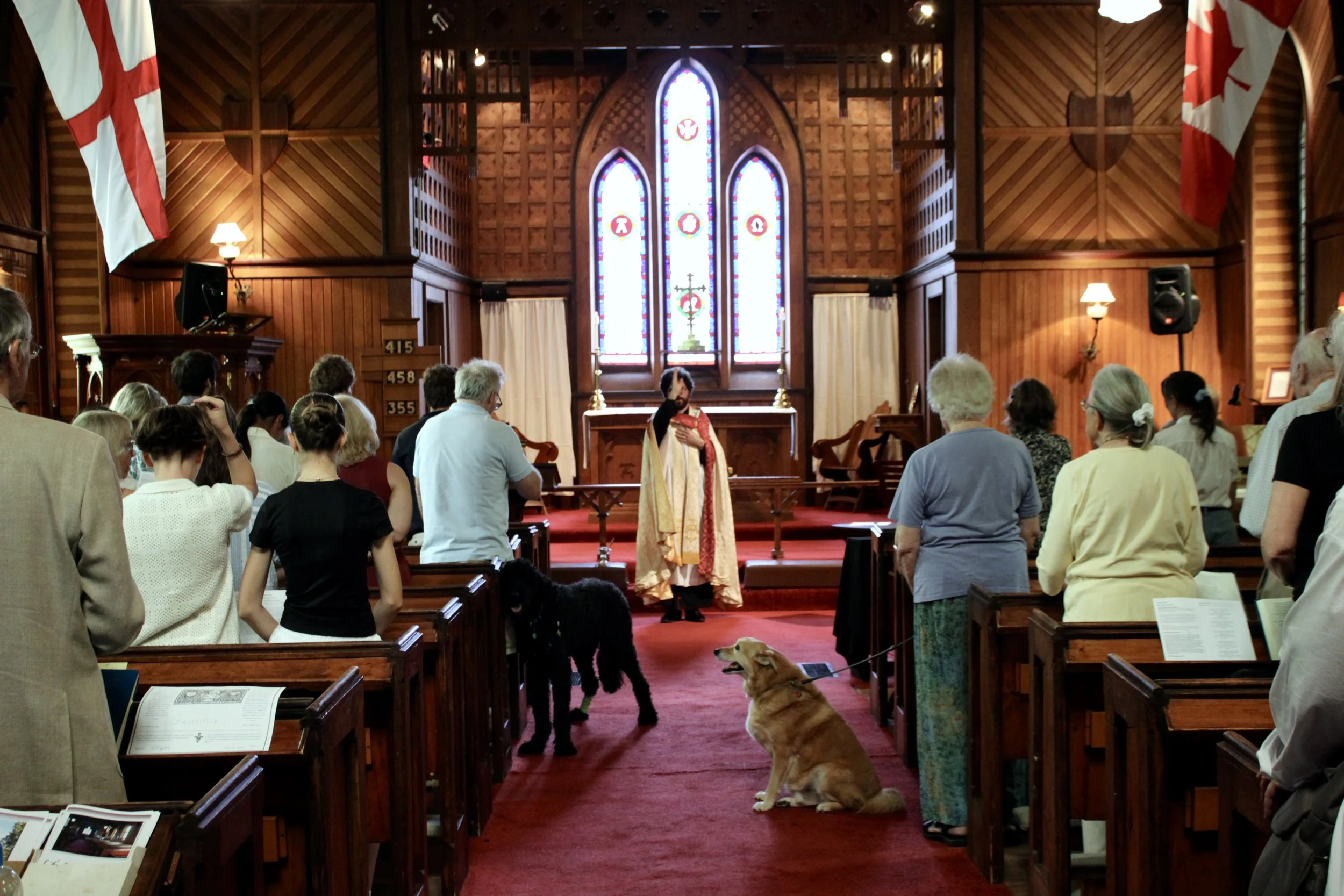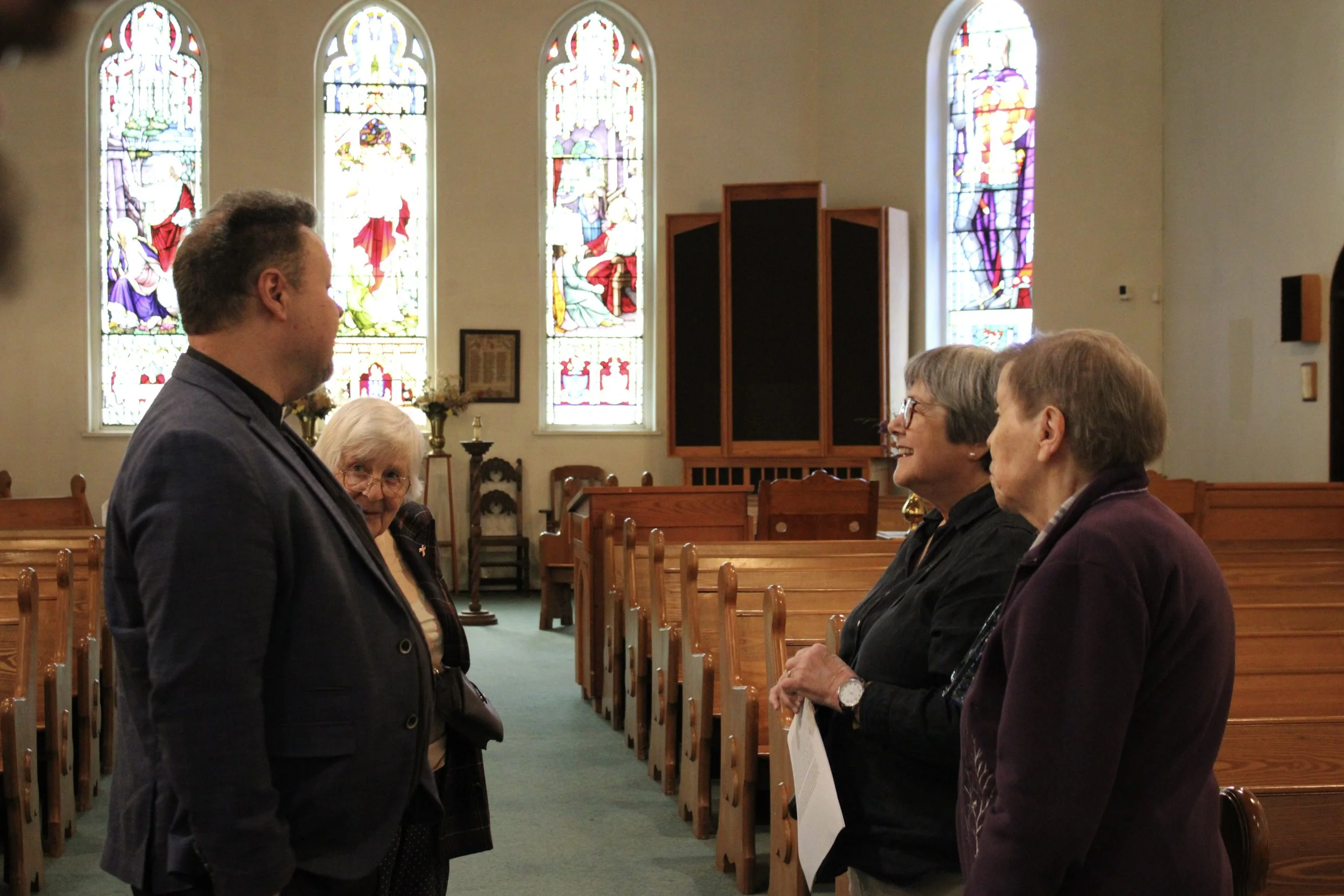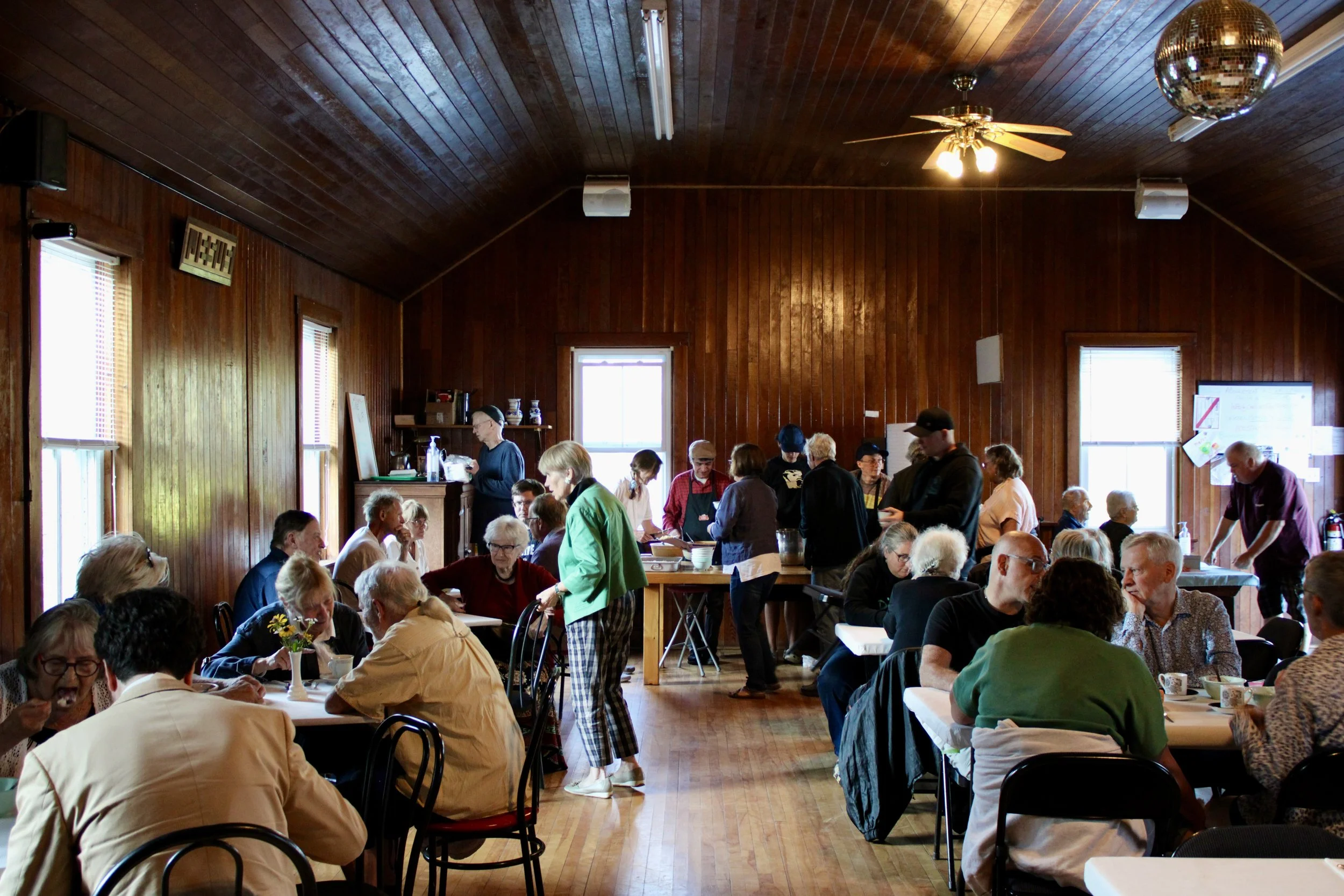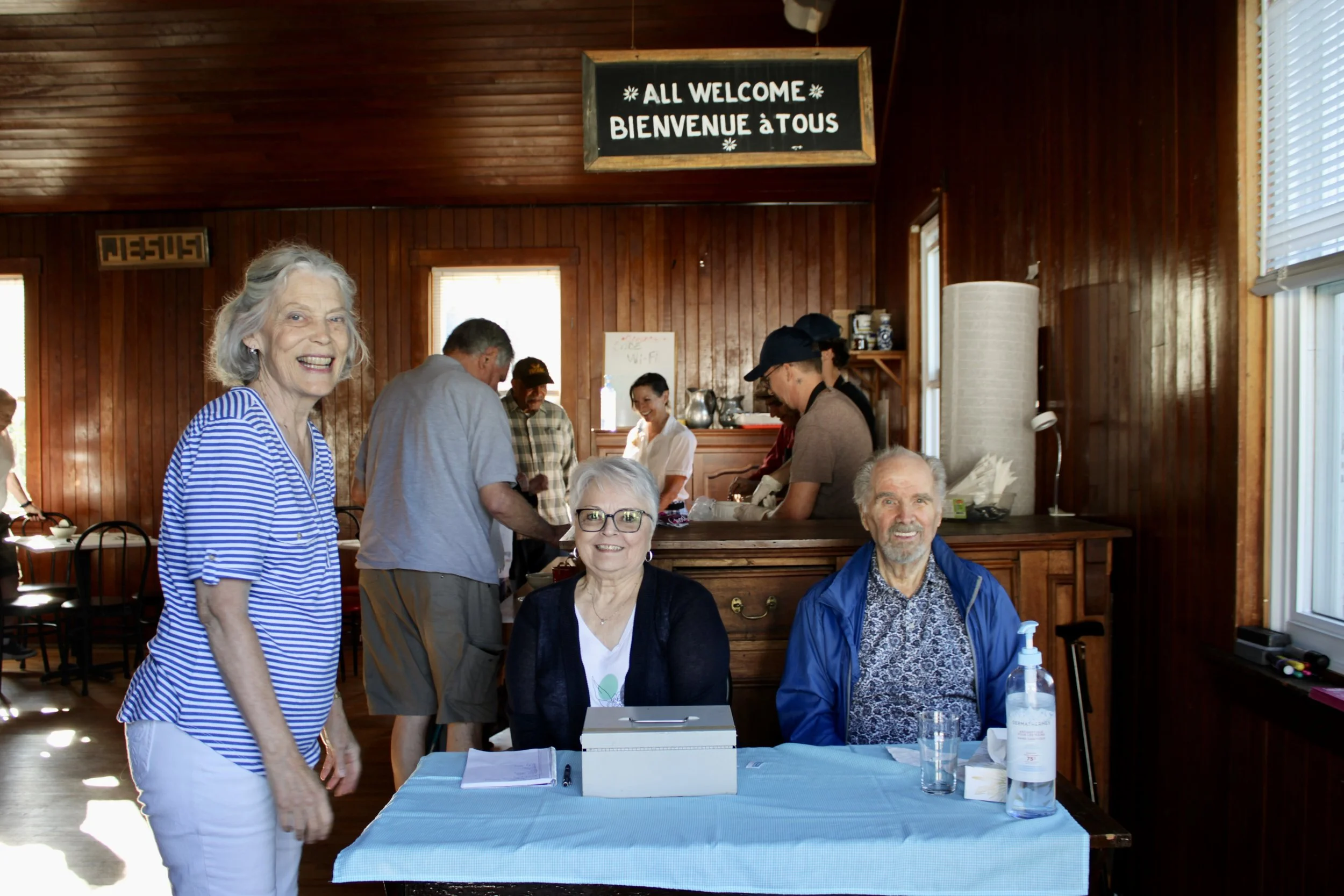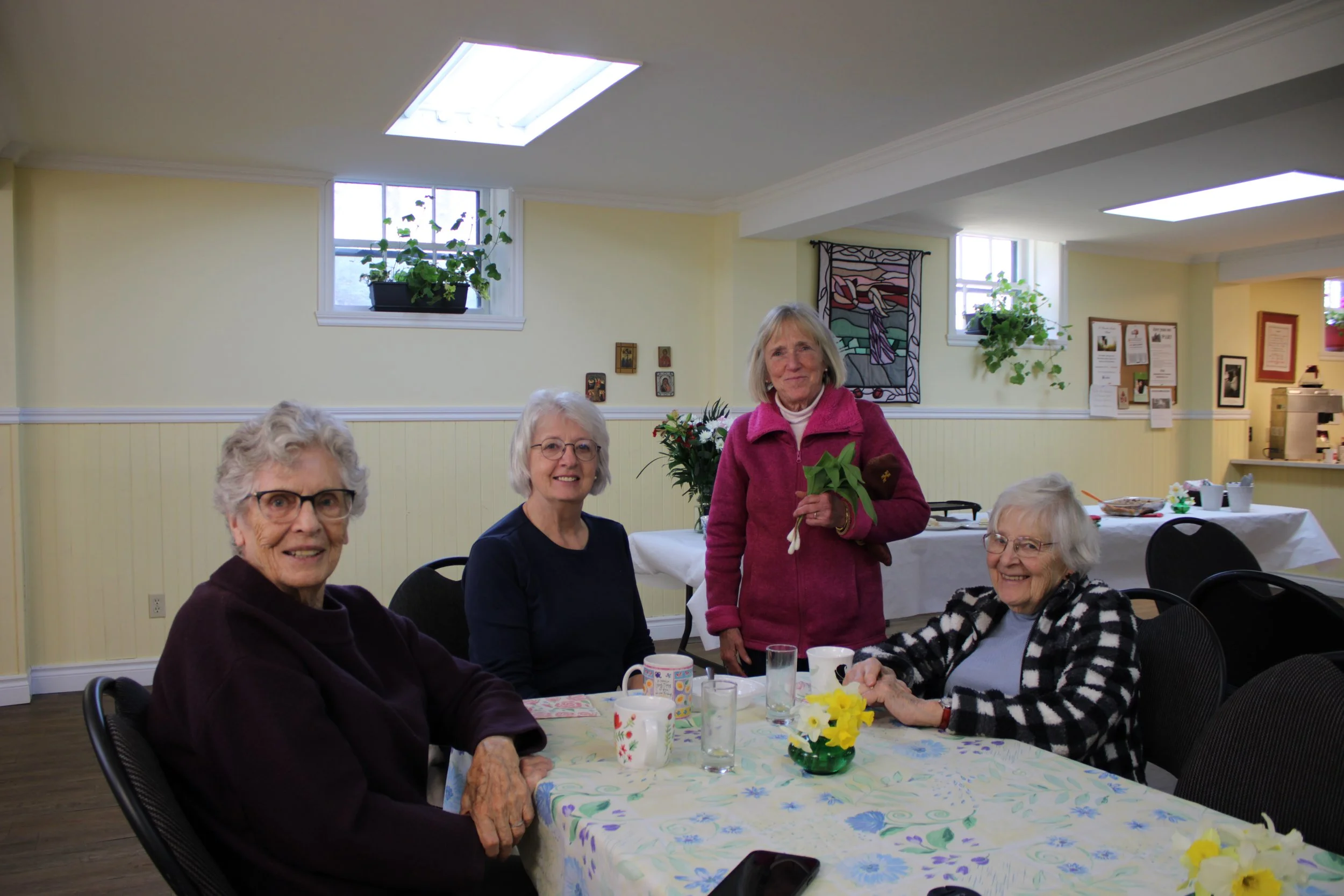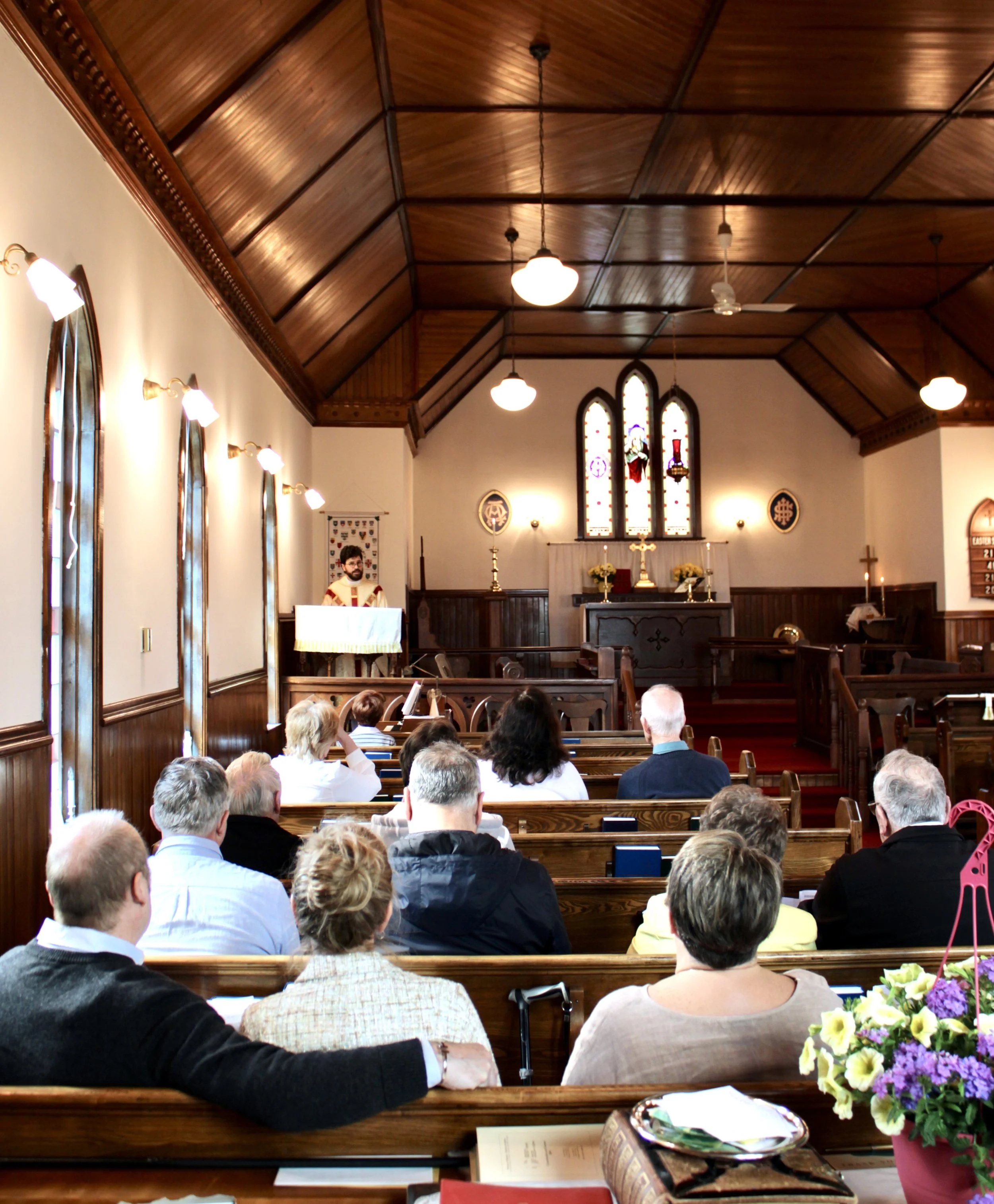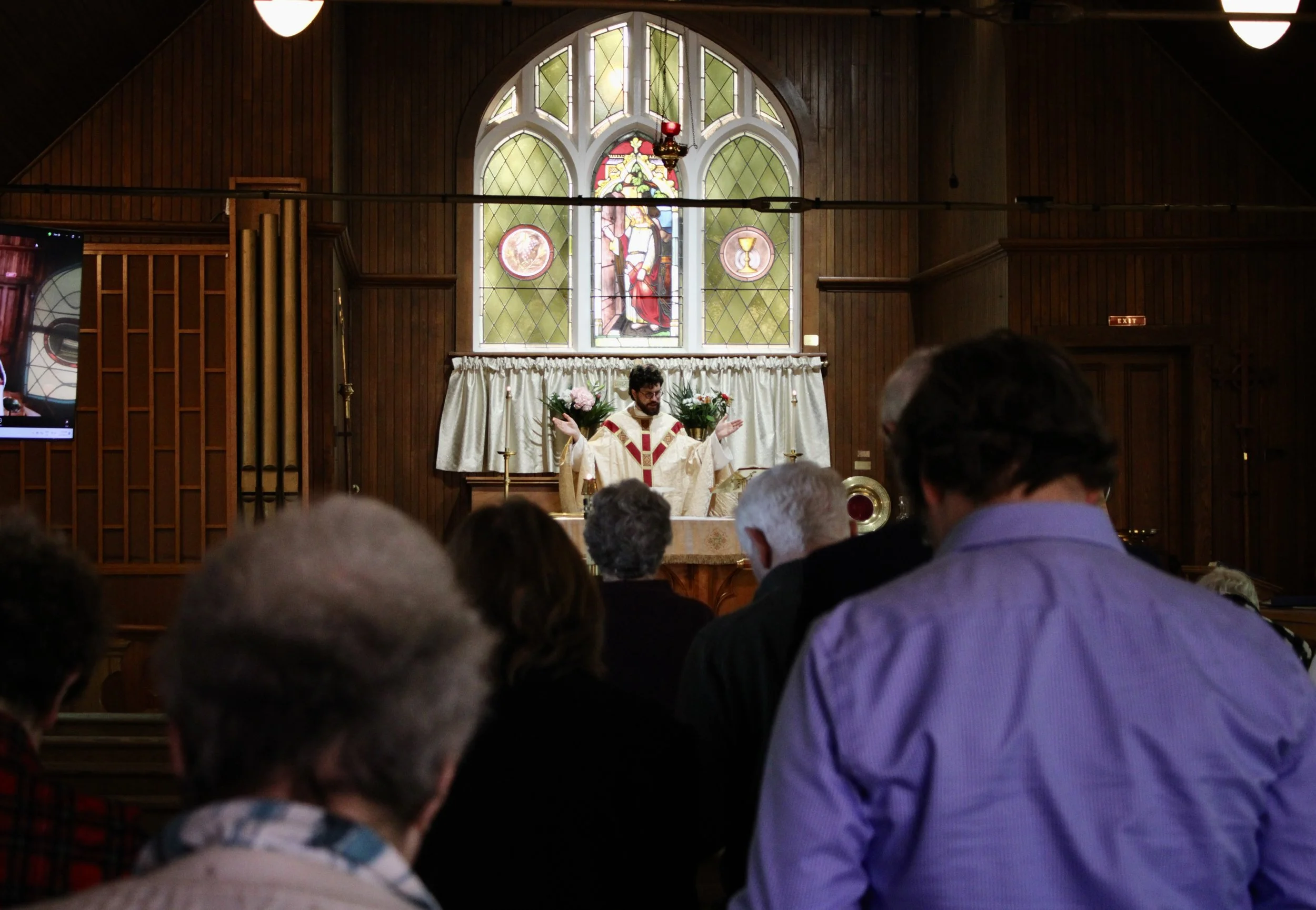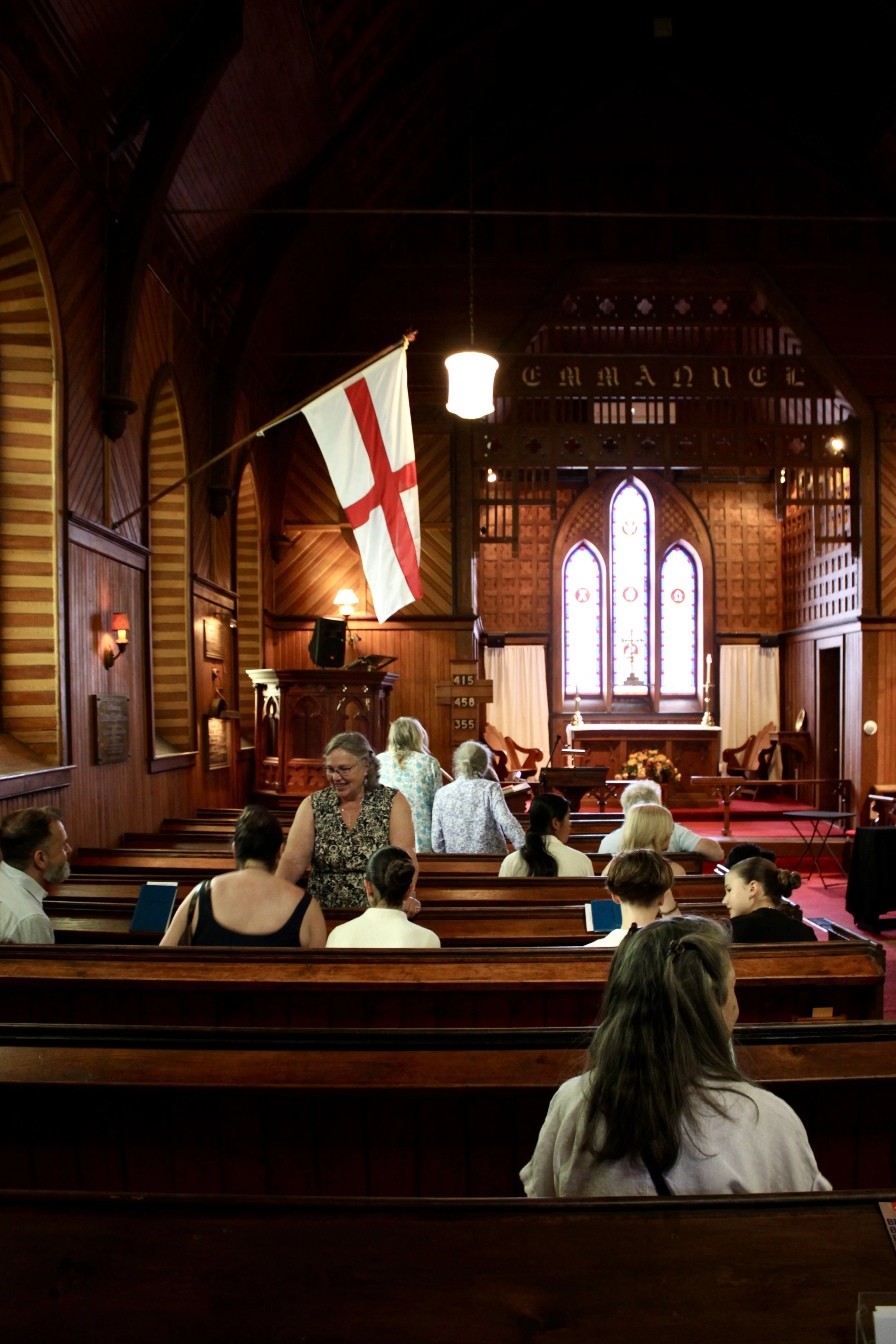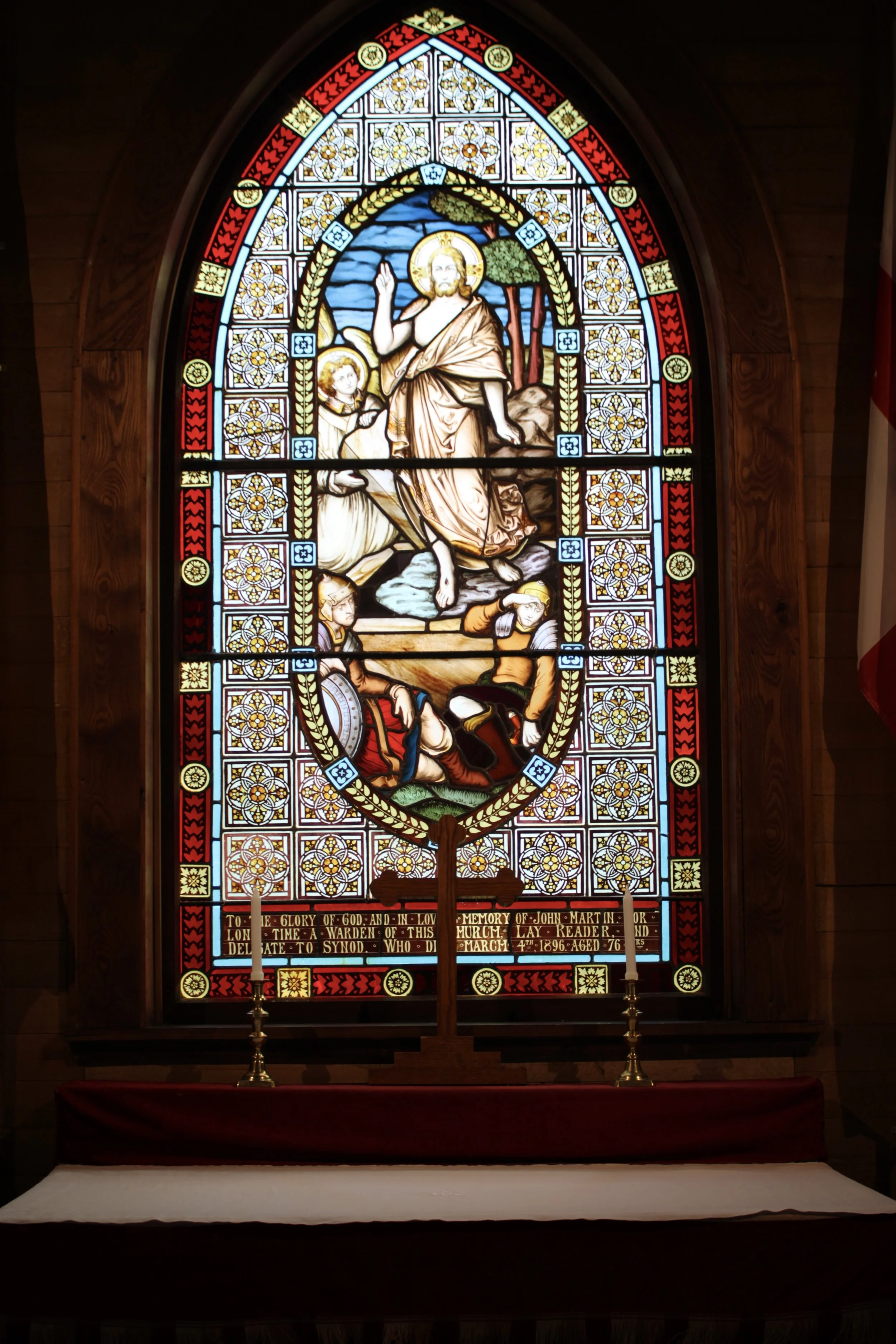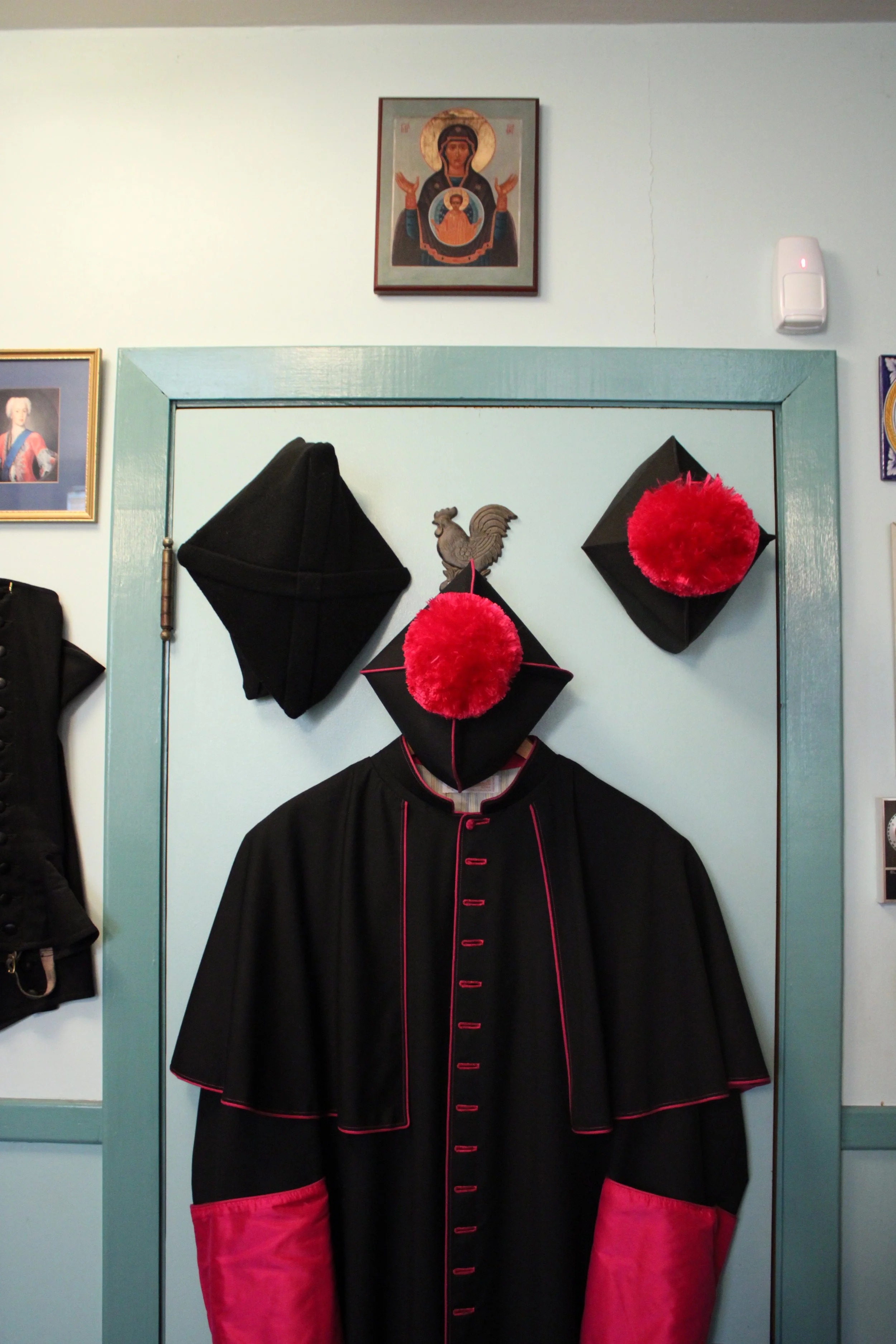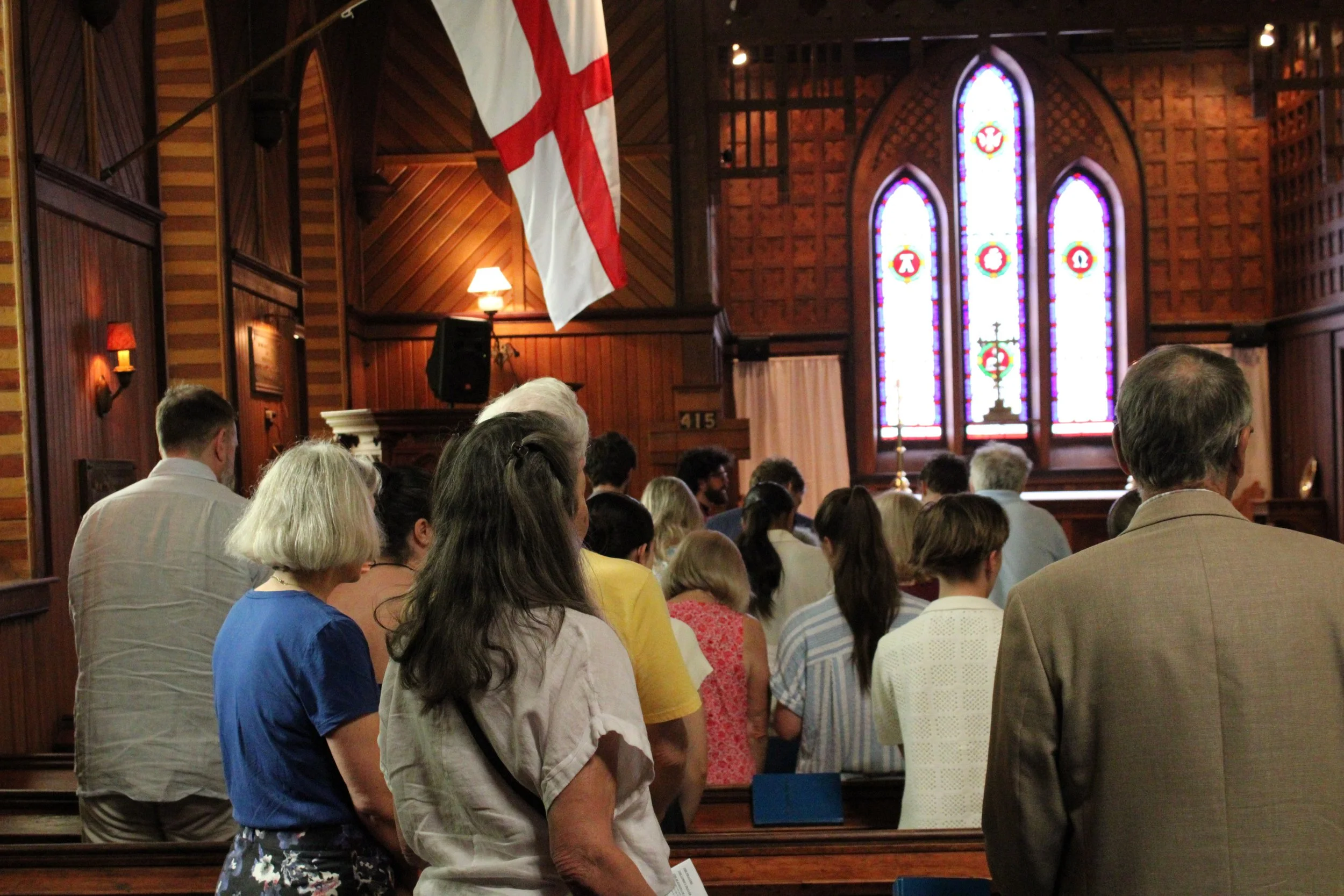
What to Expect
Whether you’re new to the faith or seeking Christian community. All are welcome to worship with us.
When you come to an Anglican Church you will notice that common prayer is an important part of how we worship together. Our services draw from a rich tradition of set prayers, either from the Book of Common Prayer, based on sixteenth-century rites, or the more contemporary Book of Alternative Services, first published in 1985. Although each local community has its own flavour, there are strong commonalities across all churches.
The Eucharist (also known as the Lord’s supper or Holy Communion) is a central part of many Sunday services, but several Anglican congregations also meet for Morning and Evening Prayer, and for services throughout the week. Anglican services typically follow a pattern that begins with the gathering of the people, then listening to and reflecting on the scriptures. The community then brings the needs of the world to God in prayer. Those gathered partake in the holy meal of Bread and Wine, before being sent forth into mission and service for others.
While some parts of the services are always the same, others change. At the Holy Eucharist, for example, two or three Bible selections are read. These change each Sunday. Certain prayers also change, in order to reflect particular celebrations.
The Act of Worship
As you enter, you will notice an atmosphere of worship and reverence. Anglican churches are built in many architectural styles. Whether the church be small or large, elaborate or plain, your eye is carried to the altar and to the cross. Our intentions are drawn to God whose house is the Church.
On or near the altar are candles to remind us that Christ is the "Light of the world'' (John 8:12). Often there are flowers to beautify God's house and to recall the resurrection of Jesus.
At the front of the church, there may be a lectern for the proclamation of the Word and a pulpit for preaching.
The Place of Worship
It is customary upon entering a church to kneel in one's pew for a personal prayer and preparation for worship. In many churches it is also the custom to bow to the altar upon entering and leaving the church as an act of reverence for Christ. Most Anglicans do not talk in church before a service but use this time for personal meditation and devotions. At the end of the service some kneel for another private prayer before leaving. Others may sit and listen to the organ postlude.
If there are ushers they will greet you at the entrance to the church. If you desire, they will answer your questions about the service. Pews are usually unreserved in Anglican churches. Following the service the minister greets the people as they leave.
Before and After the Service
To add to the beauty and festivity of the services, and to signify their special ministries, the clergy and other ministers customarily wear vestments. Choir vestments consist of an undergown called a cassock (usually black) and a white, gathered overgown called a surplice.
Another familiar vestment is the alb, a white tunic with sleeves that covers the body from neck to ankles. Over it (or over the surplice) ordained ministers wear a stole, a narrow band of coloured fabric. Deacons wear the stole over one shoulder, while priests and bishops over both shoulders.
At the Holy Eucharist, a bishop or priest frequently wears a chasuble (a circular garment that envelopes the body) over the alb and stole. The deacon's vestment has sleeves and is called a dalmatic. Bishops sometimes wear a head covering called a mitre. Stoles, chasubles, and dalmatics, as well as altar coverings, are usually colored to correspond with the Church Year. The most frequently used colours are white, red, violet, and green.
What Clergy Wear
We hope to see you on Sunday.
If you would like to discuss your upcoming visit or ask further questions, fill out our contact form to meet with a member of the clergy.
